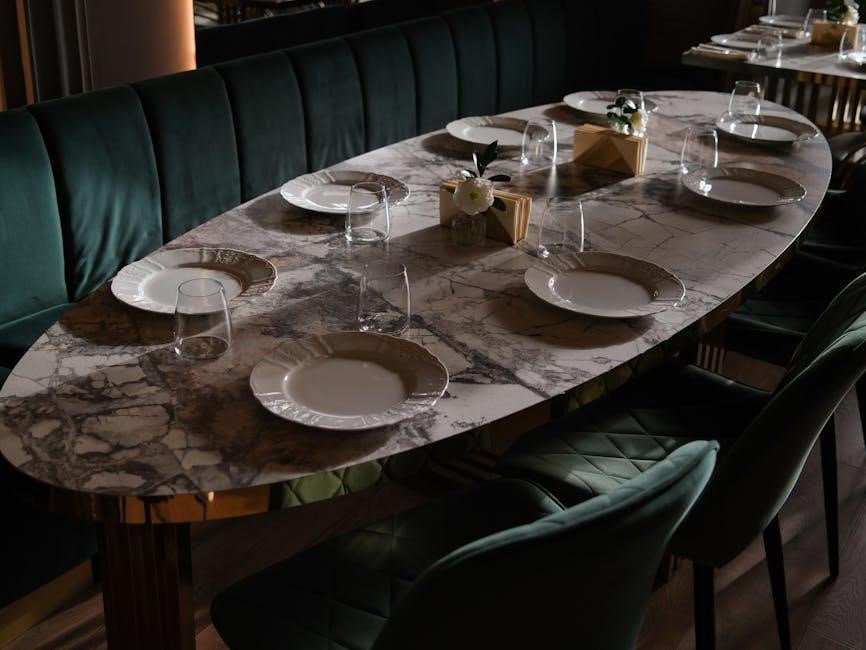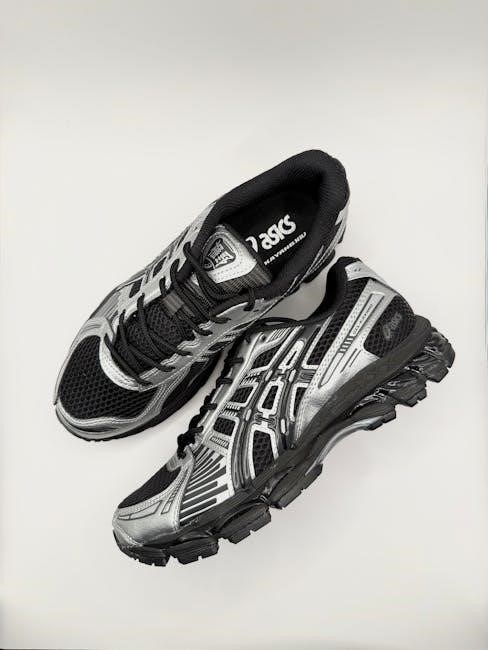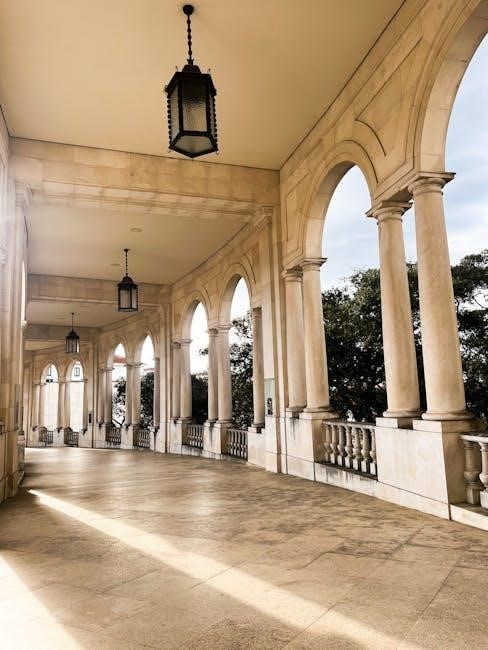
Discover the joy of creating intricate marble runs with easy-to-follow PDF guides. These step-by-step plans offer creative designs, tips, and inspiration for both kids and hobbyists to build engaging marble tracks.
Overview of Marble Runs and Their Popularity
Marble runs have gained immense popularity as a creative and educational DIY project. They combine art, physics, and engineering, making them appealing to both children and adults. The thrill of watching marbles navigate through intricate tracks sparks curiosity and imagination. With the rise of downloadable PDF guides, constructing marble runs has become more accessible. These plans often feature customizable designs, allowing users to experiment with materials like cardboard, wood, or even 3D-printed components. The sense of accomplishment and endless possibilities for innovation have made marble runs a beloved activity for families, schools, and hobbyists worldwide.
Importance of Using PDF Guides for Marble Run Construction
PDF guides are essential for marble run construction, offering detailed step-by-step instructions and diagrams. They provide pre-designed templates, material lists, and assembly tips, making complex designs accessible to everyone. These guides often include customizable options, allowing users to adapt plans to their skill level and available materials. PDFs are cost-effective, instantly downloadable, and environmentally friendly compared to paper plans. They also serve as valuable educational tools, teaching principles of physics and engineering through hands-on creativity. With clear instructions and visual aids, PDF guides ensure a smooth and enjoyable building experience for both beginners and experienced makers.
Materials and Tools Required
Essential materials include cardboard, tubes, tape, scissors, and marbles. Tools like craft knives and glue are necessary for assembly. Optional items include wooden dowels and magnets. PDF guides often provide detailed lists and templates, ensuring you have everything needed for a successful project.
Essential Components for Building a Marble Run
The core components include sturdy materials like cardboard, wood, or plastic for tracks and supports. Tubes, channels, and ramps are crucial for directing the marble’s path. Funnels, catchers, and gates help control the flow and add complexity. Adhesives, tapes, and fasteners are necessary for securing parts. Optional features like lifts, jumps, and magnets enhance functionality. PDF guides often provide templates and instructions for cutting and assembling these elements. Ensure all components are durable and precisely fitted to maintain smooth marble movement and prevent gaps or obstructions during operation.
Recommended Tools for Assembly and Customization
Essential tools include scissors, craft knives, and adhesive tapes for cutting and securing materials. Drills and sandpaper are useful for smoothing edges and creating precise holes. For advanced customization, consider laser cutters or 3D printers to craft intricate designs. Servo motors and rare-earth magnets can add dynamic features like lifts or interactive elements. PDF guides often list specific tools needed for each project, ensuring you’re well-prepared. These tools help in creating durable, functional, and visually appealing marble runs, whether you’re using cardboard, wood, or other materials.
Safety Precautions and Tips
Always handle sharp tools with care and ensure a stable structure to prevent accidents. Supervise children during assembly and test runs to guarantee a safe experience.
General Safety Guidelines for DIY Projects
When building a marble run, ensure a safe working environment. Use protective gear like gloves and safety glasses when handling sharp tools or materials. Keep loose clothing tied back and avoid jewelry that could catch on machinery. Ensure good lighting to see your work clearly. Store tools and materials out of children’s reach. Follow manufacturer instructions for adhesives, paints, and other chemicals. Maintain a clean workspace to prevent tripping hazards. Supervise children during assembly and test runs. Regularly inspect the structure for stability to avoid accidents. Always test marble runs gently before full operation.

Specific Safety Considerations for Marble Runs
When constructing marble runs, ensure all components are secure to prevent collapse. Avoid using small parts that could pose choking hazards for young children. Handle sharp edges on materials like cardboard or wood with care. Supervise children during assembly, especially when using tools like scissors or craft knives. Test the structure gently before allowing full use to ensure stability. Secure tall or heavy sections to prevent tipping. Use non-toxic materials and avoid loose parts that may detach during operation. Regularly inspect tracks for wear and tear to maintain safety and functionality.

Design Principles for Marble Runs
Design marble runs with balance and flow, ensuring smooth transitions between tracks, ramps, and curves. Experiment with angles to maximize speed and energy transfer, keeping marbles in motion longer.

Understanding the Physics Behind Marble Movement
Marble movement in runs is driven by gravity, converting potential energy into kinetic energy as they descend. Friction and collisions redirect energy, affecting speed and trajectory. Designing tracks with optimal angles ensures marbles maintain momentum, while curves and ramps redirect their path efficiently. Understanding these principles helps create smoother, more engaging runs. Properly angled descents and transitions minimize energy loss, keeping marbles in motion longer. Incorporating lifts or jumps can reintroduce potential energy, sustaining the marble’s movement and enhancing the run’s complexity. Balancing these elements ensures a dynamic and visually appealing marble run experience.
Key Features of Effective Marble Run Designs
Effective marble run designs emphasize smooth transitions, stable structures, and engaging pathways. Incorporating features like funnels, catchers, and supports ensures marbles flow seamlessly. Using materials such as cardboard or wood provides durability and flexibility. Strategic placement of ramps, curves, and drops maintains momentum while adding visual interest. Interactive elements, like magnets or modular components, enhance creativity and functionality. Properly angled descents and minimal gaps prevent energy loss, keeping marbles in motion longer. These designs balance aesthetics and physics, creating captivating and functional marble runs that inspire imagination and experimentation.
Step-by-Step Construction Guide
Start by building a sturdy frame, then add tracks, ramps, and curves. Incorporate funnels and catchers to create smooth transitions and engaging marble interactions.

Building the Frame and Base Structure
Start by constructing a sturdy frame using materials like cardboard, wood, or 3D-printed parts. Ensure the base is level and secure. For a standard size, consider a frame of 16×20 inches with a 3-inch depth for stability. Attach the tracks and components firmly to the frame using adhesive or screws. Use painter’s tape or magnets to secure parts temporarily while testing. Reinforce corners and joints to prevent wobbling. A solid base ensures smooth marble movement and durability. Follow PDF guides for precise measurements and assembly tips to create a reliable foundation for your marble run design.
Creating Tracks, Ramps, and Curves
Design your marble run’s tracks, ramps, and curves using materials like cardboard, wood, or 3D-printed parts. Start with straight tracks to establish a base path, then incorporate ramps for elevation changes. Experiment with gentle and steep angles to alter the marble’s speed and direction. Add curves to create twists and turns, ensuring smooth transitions. Use tape or adhesive to secure components temporarily while testing. For more complex designs, integrate jumps or interactions to add excitement. Follow PDF guides for precise measurements and creative ideas to craft a dynamic and engaging marble run layout.
Integrating Funnels, Catchers, and Supports
Funnels and catchers are essential for guiding and collecting marbles smoothly. Use cardboard or wood to craft funnels, ensuring they direct marbles into tracks seamlessly. Catchers can be boxes or containers placed at the end of runs to gather marbles. Supports, like wooden dowels or brackets, stabilize taller structures and prevent wobbling. Attach these components securely with glue or tape. Test each addition to ensure marbles flow effortlessly. For advanced designs, incorporate multiple catchers and funnels to create branching paths. Refer to PDF guides for detailed templates and assembly tips to enhance your marble run’s functionality and visual appeal.

Advanced Features and Customization
Elevate your marble run with lifts, jumps, and interactive elements. Add magnets for modular designs or incorporate sound effects for enhanced fun. Customize tracks with unique themes and extensions for endless creativity.
Incorporating Lifts, Jumps, and Interactions
Add dynamic elements like lifts and jumps to keep marbles in motion longer. Use servo motors or manual mechanisms for lifts, allowing marbles to climb and descend. Jumps can be created with ramps or spring-loaded platforms. Incorporate interactions such as ringing bells, spinning paddles, or tripping levers for added fun. These features create a Rube Goldberg-like experience, captivating users. Ensure smooth transitions between elements and test thoroughly to maintain marble flow. Detailed PDF guides provide step-by-step instructions for integrating these advanced features seamlessly into your design.
Adding Sound and Visual Effects
Elevate your marble run by incorporating sound and visual elements. Marbles can ring bells, spin paddles, or trigger levers, creating a captivating experience. Use chimes or small bells placed along the track for melodic sounds. Visual effects like LED lights or glowing tubes add an extra layer of engagement. These features transform the marble run into an interactive display, combining motion with auditory and visual feedback. Detailed PDF guides provide creative ideas and step-by-step instructions to seamlessly integrate these effects, making your marble run a mesmerizing and dynamic creation.

Troubleshooting Common Issues
Identify and fix common problems like marbles stopping or getting stuck. Check for obstructions, adjust angles, and ensure smooth transitions between tracks for optimal performance.
Identifying and Fixing Leaks or Gaps
Inspect your marble run for gaps where marbles might get stuck or fall. Use a marble to test the flow and identify problem areas. Check connections and joints, ensuring they are secure. If gaps are found, seal them with tape, glue, or additional supports. For DIY builds, reinforce weak points with extra material. Regularly test the run to ensure smooth transitions between tracks and funnels. Addressing leaks early prevents larger issues and keeps the marbles moving effortlessly through the design.
Adjusting Angles and Speed for Optimal Performance
Optimize your marble run by fine-tuning angles and speed. Steeper angles increase velocity but may cause marbles to jump tracks, while flatter angles provide better control. Experiment with track inclines to balance speed and stability. Use tape or supports to secure loose sections and ensure smooth transitions. Test marbles frequently to identify areas where they slow down or stall. Adjusting these elements enhances performance, ensuring marbles flow effortlessly through the design. Proper calibration guarantees a seamless and engaging experience for users of all skill levels.

Maintenance and Upkeep

Regularly clean your marble run to remove dust and debris. Store it in a dry place to prevent damage. Upgrade or expand your design as needed for lasting enjoyment.
Cleaning and Storing Your Marble Run
Regular cleaning ensures your marble run remains functional and visually appealing. Use a soft cloth to wipe down tracks, removing dust and debris. Avoid harsh chemicals, as they may damage materials. For storage, disassemble larger sections and place them in a dry, secure location. Consider using protective covers or bags to prevent scratches. Check for loose parts and tighten them before storing. Proper maintenance extends the lifespan of your marble run, keeping it ready for future use. Store instructions and plans alongside for easy reference when reassembling or upgrading your design.
Upgrading and Expanding Your Design
Take your marble run to the next level by incorporating advanced features like lifts, jumps, and interactive elements. Use modular components to create expandable designs, allowing for endless creativity. Add magnets or themed elements to enhance visual appeal and functionality. Experiment with new materials or techniques to introduce unique challenges, such as sound effects or lighting. For inspiration, explore PDF guides that offer innovative ideas and step-by-step instructions. Upgrading and expanding your marble run not only refreshes its appeal but also encourages continuous learning and creativity for builders of all ages.

Creative Ideas and Inspiration
Explore unique themes, modular designs, and interactive elements. Incorporate magnets for wall-mounted runs or add sound effects for enhanced engagement. Discover endless possibilities in PDF guides to inspire your next project.
Unique Themes and Designs for Marble Runs
Unleash your creativity with themed marble runs, such as spiral, zigzag, or Rube Goldberg-inspired designs. Use magnets for wall-mounted tracks or incorporate modular components for endless customization. Experiment with sound effects or LED lights to enhance the visual appeal. Themes like space, jungle, or cityscapes can add a personal touch. PDF guides often feature detailed plans for intricate designs, allowing you to build unique and engaging marble runs. Whether for kids or hobbyists, these creative ideas ensure hours of fun and intellectual stimulation.
Incorporating Magnets and Modular Components
Enhance your marble run with magnets and modular designs for versatility and creativity. Magnets allow tracks to attach to walls or metal surfaces, creating space-saving setups. Modular components enable easy customization, letting you rearrange and expand your design. These features, often detailed in PDF guides, make marble runs adaptable and reusable. Experiment with magnetic connections to build complex, three-dimensional layouts. Modular parts also simplify troubleshooting and upgrading, ensuring your marble run remains engaging and dynamic. This approach caters to both beginners and experienced builders, fostering endless creativity and fun.
Conclusion
With these guides, you’ve unlocked the secrets to creating mesmerizing marble runs. Embrace creativity, experiment, and enjoy the endless fun of watching marbles roll through your designs!
Final Tips for Building a Successful Marble Run
Start with simple designs and gradually add complexity. Always test each section as you build to ensure smooth marble flow. Use sturdy materials like cardboard or wood for durability. Experiment with angles, gaps, and curves to keep the marbles rolling longer. Don’t hesitate to adjust or rebuild sections for better performance. Incorporate fun elements like jumps or sounds to enhance engagement. Finally, refer to PDF guides for inspiration and detailed instructions to refine your skills and create mesmerizing marble runs that captivate and entertain!
Encouragement to Experiment and Innovate
Embrace creativity and push the boundaries of marble run design! Experiment with unique materials like cardboard, wood, or even 3D-printed parts. Try incorporating magnets, lights, or sounds for added excitement. Don’t be afraid to fail—each attempt is a learning opportunity. Expand your skills by exploring new mechanisms, such as lifts or interactive elements. Share your creations online for inspiration and feedback. Remember, the joy of marble runs lies in endless possibilities and the thrill of watching your ideas come to life. Keep innovating and have fun building!